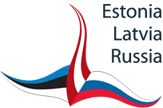Stages of the Pskov-Peipsi Waterway Development
Studies of the archeological finds and written testimonies – primarily chronicles – suggest there were several functional stages in the history of the Pskov-Peipsi and Narova waterways.
In the 6th-7th centuries, downstream of the Velikaya, as well as midstream of the Kääpa, Võhandu and Piusa and along the shores of the Pskov Lake spread the monumental barrows, mainly concentrating around the southern lakeshore. Individual monuments of the same culture occur on the islands of the Pskov Lake and on the eastern shore of Lake Peipus. In the 6th-8th centuries, within the areal of the culture in question settlements of Izborsk, Kamno, Pskov, Storozhinets and Gorodische appear in the downstream of rivers bound for the lake. The placement of the barrow culture monuments leads to conclude there was a need in water communications within the areal, to maintain connections between individual sedentary zones.
It is premature to speak of trade as an established system of economic relations during this period – the array of information available to us is too small. Although it is obvious that the rivers of the watershed and the lake itself were used by locals for various contacts with neighboring settlements, including economic and natural exchange. Subjects of these transactions were commodities of natural economy and local craftsmanship items.
Parallel to the reclamation of the shoreline, the infrastructure of the waterway from the Baltic Sea up the Narova across the Pskov-Peipsi Lake to the Velikaya delta and further up the stream starts emerging. It is characterized by the occurrence of new outposts in the key sites of the route – at the rapids on the Velikaya (Vybuty) and Narva (Olgin Krest), and convenient moorings in the mouth of the Cherma (Verkholyany, Kalikhnovschina) and in Zalakhtovye. Those were the settlements enabling both navigational servicing of the waterway and its control. And the equal distances in between these sites most probably used to correspond to a one-day travel.
The written sources do not have any written evidence as regards the functioning of the Pskov-Peipsi-Narova waterway in this period, however the events taking place in the Pskov Land those days confirm the significance of this route for the time of establishing the state of Russ (according to the chronicled narration of the Call for the Vrangians, Rurik’s brother Truvor settled in Izborsk in 862; and, as the Tale of Bygone Years has it, Princess Olga came from the vicinities of Pskov – Vybuty).
The spread zone of imported items, troves of Arabic and Western-European coins of the time includes the delta of the Velikaya and the southern shore of the PskovLake. Evidence as to the inclusion of the region into the system of international communications of the time appears in the form of Scandinavian antiquities – primarily weapons, Scandinavian burials and items dating back to the mid-9th-11th centuries, as well as Arabic and Western-European coins in Izborsk and Pskov. Back to the same late 9th through early 11th centuries dates the majority of local finds of Scandinavian and Nordic personal belongings.
Characterized by mass reclamation of the interfluve lands between the Narva and Plyussa, and the Narva and Luga by people native to the central area of the Novgorod Land. The Narova shoreline is also reclaimed in its mid- and upstream, and also the northeastern Peipsi shore gets settled in. Western-European coin troves of the period are known both on the eastern and western shores of the Pskov-PeipsiLake. Placement of coin finds along waterways testifies to their important role in international interactions of that era. In all probability during that period, coins and imports entered the Peipsi watershed in several directions, of which the western – via the rivers of Eastern Baltics – and the northern – via the Narova – are the major.
The 14th-15th centuries is the most multiple timestamp on written narratives of water locomotion along the Pskov-Peipsi-Narova artery. In the chronicles this aspect is mainly described in the context of military reports. However, they also contain information on the role of water basins for the economy of the PskovLand. There are four entries – under years 1228, 1323, 1380 and 1403 – reporting significant numbers of Pskovite vessels in the lake, and two of those entries are trade-related.
Evidence of the inclusion of the watershed into the system of Nordic trade can also be seen in the Hansa documents. According to one of those, in 1346, German merchants obtained entitlement to dock their ships in three harbors of the Eastern Baltics: Riga, Reval (Tallinn) and Pernov (Pärnu). The rally points for Novgorod-bound ships were Narva and Dörpt (Tartu). Commonly, ships from Narva moved further to the mouth of Neva, or – if reloaded on to riverboats – up the Luga, whereas in Dörpt Hanseatic ships, including those from Riga and Reval, grouped for a joint sail to Pskov, and also further up the Cheryokha and Shelon’ to Novgorod. Apart from the Narva route, the rivers Pärnu and Emajõgi were used to get to Dörpt.
Apart from archeological and historical record data, the waterway track in the lake and Narova can be marked using the toponymy and placement of temples in the name of St. Nicholas – patron of seafarers. From Pskov, the track lay through Ustye (Russian for river mouth), where in the 15th century a St. Nicholas church was functioning, then along the southwestern shore of the Pskov Lake by the chronicled harbors of Kolpino and Berezye. Further on, the track turned north passing through Uzmen’ into the Tyoploye Lake. Here it crossed with other tracks, one of which ran east, up Zhelcha River into the Plyussa catchment, and another one ran west and into the Emajõgi towards Dörpt. Farther up in Peipus, the track ran along its eastern shore and the harbors of Podoleshye, Ostrovtsy and by Zalakhtovye, and then at the source of Narova – by Skamya harbor. Here, in Olgin Krest (Olga’s Cross), another St. Nicholas church was built in the 15th century.
The written records contain most meager data on Pskov-German and Pskov-Livonian trade. The earliest of the documents date back to the second half and late 13th century. As a rule, they deal with settling disputes of the sides. Reasons for conflicts usually concerned failure to commit under agreements by either of the sides, breach of trade agreements, lien on goods for damage or fraud, and robberies of caravans and individual merchants. Sometimes, following such problems, trade was suspended. But such suspensions would commonly be short-lived. Trade was mutually beneficial, and thus even during the official trade blockades trade relations often continued in the form of contraband.
The agreements, offensive cases and other documents practically shed no light on the range of goods. But archeology fills this gap. In the cultural layer of Pskov items of Western-European import were found, including silver and nonferrous metals (copper, tin and lead), fabriques, amber, glassware and window glass, Western-European (a.k.a. Rhenish) ceramics. Apart from the categories of mass import, individual western crafts items were discovered. A particular example of such finds is the collapsible looking glasses in metal frames.
The issue of a German trade mission in Pskov remains open. Data relating to the German Trade Court dates only as far back as the mid-16th century. It is a known fact that the right bank of Pskova, opposite from the Kremlin, used to be called the German Riverbank – nonetheless, the name occurs in written sources only in the late 15th century. Apparently, before the 16th century Pskov had no specialized foreign guesthouse – in contrast to Novgorod – and upon arrival to Pskov, German merchants stayed in courtyards of Pskovites.
The Pskovite trade missions to Baltic towns, and their activities primarily in Riga and Dörpt, known well from 17th-century sources, had happened before too. For instance in 1438, 45 Pskov merchants were arrested (apprentices spared) in Dörpt and 150 in 1501.


